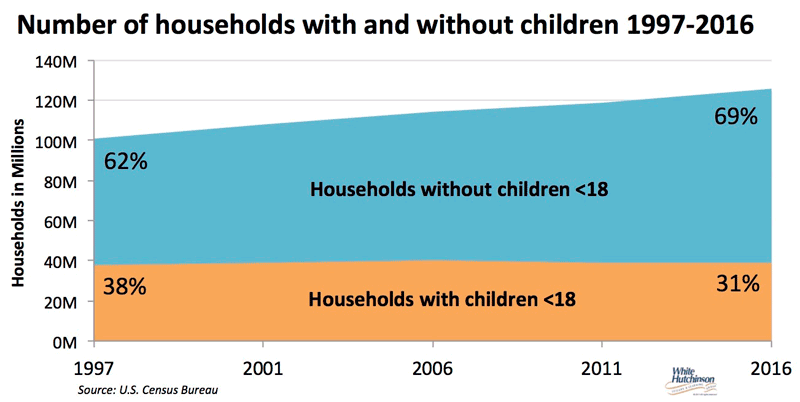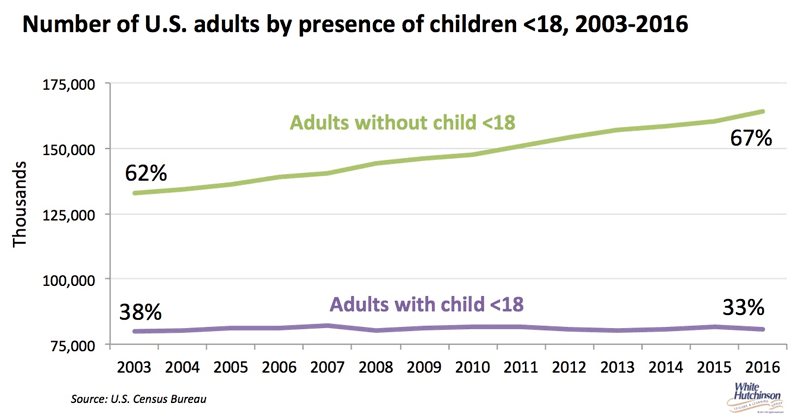
Vol. XVII, No. 3, March 2017
- Editor's corner
- The snackification of food culture; its implications for CLVs
- Foundations gets IAAPA Certified. Next program May 10-12 in New Jersey
- More adults living in households without children
- Consumer loyalty & customer satisfaction
- Cinemas continue attendance decline but are fighting back
- Binge watching is for lovers
- What forms & shapes a positive memory of a visit to a CLV?
- Shooter-tainment arrives
- The modern family: why children rule
More adults living in households without children
Demographic shifts in America are impacting every consumer industry. One of these shifts is the steady decrease of households with children. Twenty years ago, just before the start of the 21st Century, 38% of adults lived in a household without children under age 18. Today, more than two-thirds do (69%).
Back in 1997, there were 38 million households with children. Twenty years later in 2016, the number had only grown by 1.0 million to 39 million. Conversely, the number of childless households grew from 63 million to 87 million.

Just as the number and percent of households without children has increased, so has the number of adults living without children. In 2003, 62% of adults didn't live with children. In 2016, that had grown to 67%. Even more significant is the growth in number. In 2003, 132.6 million adults didn't live with children. That grew by almost one quarter (24%) to 164 million in 2016. The greatest increase in number was with adults age 25-34 (+32%), age 55-64 (+48%) and age 65+ (+38%). Meanwhile, during that same timespan, the number of adults living with children hardly grew at all, only from 79.9 million to 80.7 million.

Behind the increases are delayed marriage and childbearing as well as the aging of the population. The biggest increase in childfree living has occurred among adults age 50 and older while the only increases in adults with children is with the 20 to 29 age group.
Implications for CLVs:
What this means for community leisure venues (CLVs), including family entertainment centers (FECs), is that the number and percentage of both childless households and adults not living with children has significantly increased over the recent past while the number of households with children has basically remained flat. This means the market for the traditional family entertainment centers targeting families with children is flat at best, and as a percentage of the overall market, has significantly decreased. Meanwhile the potential market for adult-focused CLVs has grown significantly.
Vol. XVII, No. 3, March 2017
- Editor's corner
- The snackification of food culture; its implications for CLVs
- Foundations gets IAAPA Certified. Next program May 10-12 in New Jersey
- More adults living in households without children
- Consumer loyalty & customer satisfaction
- Cinemas continue attendance decline but are fighting back
- Binge watching is for lovers
- What forms & shapes a positive memory of a visit to a CLV?
- Shooter-tainment arrives
- The modern family: why children rule


